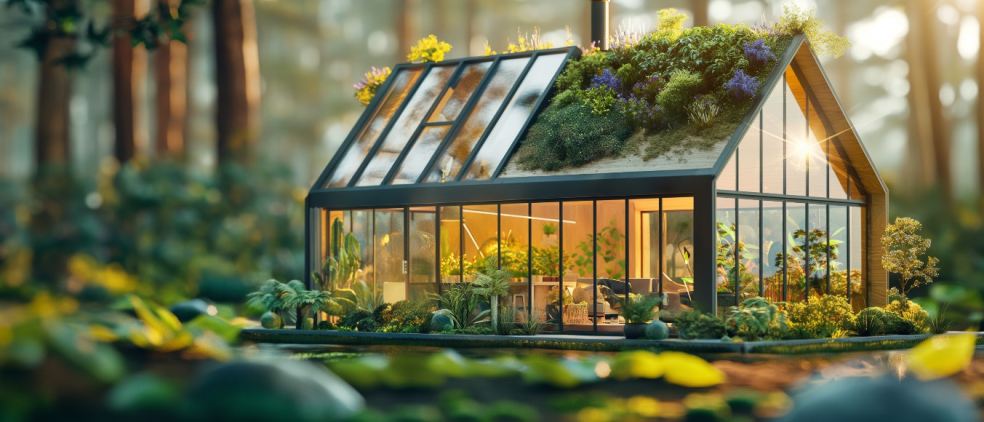
Creating a Sustainable Glasshouse Garden: Eco-Friendly Practices
Building a sustainable glasshouse garden is a rewarding pursuit that not only benefits the environment but also creates a year-round sanctuary for diverse plants. By embracing eco-friendly methods, you can cultivate a flourishing garden that reduces your carbon footprint and promotes a healthier planet.
Whether you are an experienced gardener or just starting, adopting eco-friendly techniques will enhance your gardening experience and support larger environmental goals. This guide will help you implement practices that turn your glasshouse into a beacon of sustainability, strengthening your bond with nature.
Choosing The Right Glasshouse
Selecting the right glasshouse is crucial for establishing an eco-friendly botanic garden. The design and materials of your glasshouse significantly affect your energy consumption and the overall sustainability of your gardening efforts. Opt for glass houses made with energy-efficient materials and excellent insulation to reduce the need for extra heating.
Consider Sproutwell's glasshouse options and other reliable glasshouse suppliers which offer energy-efficient designs that help maintain a stable internal environment, lessening the reliance on external energy sources. Ensure your glasshouse is robust and suited to your local climate, enhancing its sustainability further.
The location of your greenhouse is also important. Placing it where it receives plenty of natural light will decrease the need for artificial lighting, thus conserving energy. Orienting your glasshouse to maximise sunlight exposure will also enhance plant growth while minimising energy usage.
Efficient Water Management
Water is a valuable resource and managing it efficiently in your glasshouse garden is key to sustainability. Begin by installing a rainwater harvesting system to collect and store rainwater for irrigation, reducing reliance on mains water.
A drip irrigation system is another efficient way to manage water. This method delivers water directly to plant roots, minimising waste and evaporation. It ensures your plants receive adequate water without excess runoff.
Mulching is also beneficial for water conservation. By applying a layer of organic mulch around your plants, you retain soil moisture, reducing the need for frequent watering. Mulch also suppresses weeds and improves soil quality as it decomposes, benefiting glasshouse gardens overall.
Sustainable Soil Practices
Healthy soil is the cornerstone of a successful glasshouse garden. Adopting sustainable soil practices not only boosts plant growth but also supports the broader ecosystem. Use organic compost to enrich your soil. Composting kitchen scraps and garden waste creates a nutrient-rich amendment that improves soil structure and fertility.
Practicing crop rotation is essential for sustainable soil management. Rotating different plant families in your botanic garden prevents soil depletion and reduces pest and disease risks. Each plant type extracts different nutrients, so rotation helps maintain a balanced and healthy growing medium.
Avoid chemical fertilisers and pesticides, as they harm beneficial soil organisms and degrade soil quality over time. Instead, use natural alternatives like neem oil or insecticidal soaps for pest control and organic fertilisers such as compost tea or seaweed extract to nourish your plants sustainably.
Energy-Efficient Heating And Cooling
Maintaining optimal temperature in your glasshouse is crucial for plant health but can be energy intensive. Adopting energy-efficient heating and cooling methods will create a comfortable environment for your plants while reducing energy use. Insulate your greenhouse to retain heat during colder months. Thermal screens or bubble wrap can significantly reduce heat loss.
Consider using renewable energy sources like solar panels to power your greenhouse. Solar energy can run fans, heaters, and lights, cutting down on the need for non-renewable energy sources. A solar-powered ventilation system can efficiently regulate temperature and humidity levels.
For cooling, natural ventilation is a simple and effective method. Opening vents and windows allows fresh air to circulate, lowering temperatures without electric fans. Shade cloths can also protect plants from excessive heat and sunlight, creating a balanced environment in glasshouse gardens.
Waste Reduction And Recycling
Minimising waste and promoting recycling are crucial for a sustainable glasshouse garden. Reduce plastic use by opting for biodegradable pots and plant labels made from bamboo or recycled paper. Reusing containers and tools whenever possible also helps cut down on waste.
Composting is an excellent way to recycle organic waste. Instead of discarding plant clippings and kitchen scraps, turn them into compost to enrich your soil. This not only reduces landfill waste but also provides a valuable resource for glasshouse gardens.
Encourage biodiversity by creating habitats for beneficial insects and wildlife. Planting various flowers and herbs can attract pollinators, while leaving some areas undisturbed can provide shelter for beneficial predators. This natural balance reduces the need for chemical interventions and supports a healthy ecosystem within your glasshouse garden.
The Bottom Line
Creating a sustainable glasshouse garden involves making thoughtful choices and adopting practices that benefit both your plants and the environment. By selecting the right glasshouse, managing water efficiently, practicing sustainable soil management, adopting energy-efficient methods, and reducing waste, you contribute to a healthier and greener future.
These eco-friendly practices not only improve the productivity and health of glasshouse gardens but also foster a deeper connection with nature. Embrace these strategies and transform your glasshouse garden into a model of sustainability, enjoying the rewards of a thriving, eco-friendly oasis.










